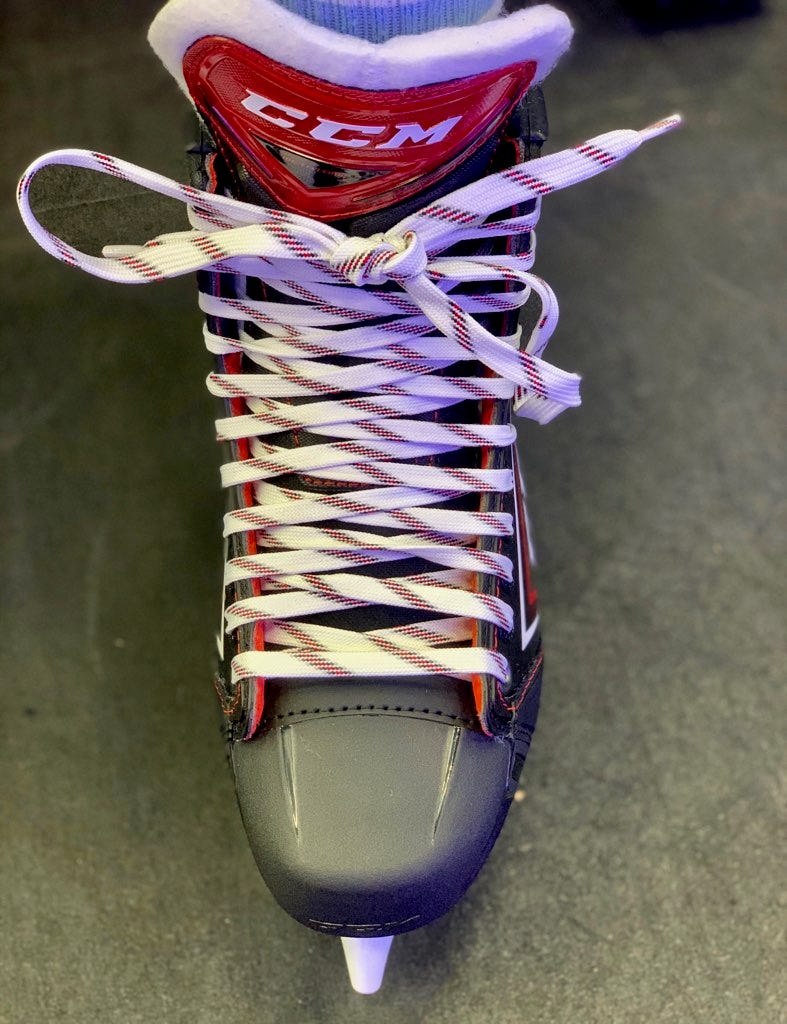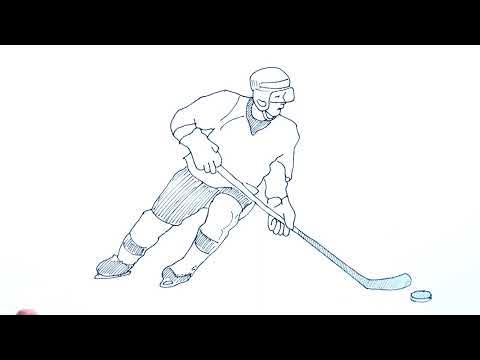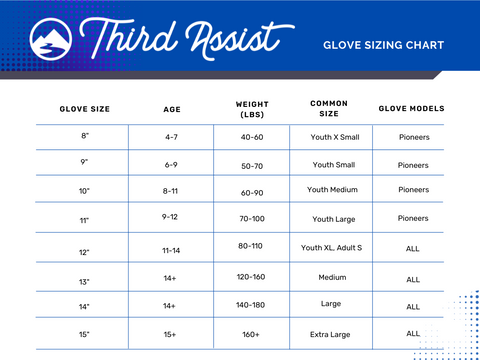Lacing ice hockey skates properly is essential. It ensures comfort and prevents injuries.
Ice hockey skates need special care. Many players lace their skates wrong, causing discomfort. Proper lacing gives better control and support. It’s not just about tightening the laces. The right technique can improve your game. A good fit boosts performance and keeps your feet safe.
This guide will help you lace your skates the right way. You will learn simple steps to get the perfect fit. Let’s get started on making your skates comfortable and secure.
Importance Of Proper Lacing
Proper lacing of ice hockey skates is crucial. It impacts both performance and safety on the ice. Many players, especially beginners, overlook this aspect. But the way you lace your skates can make a big difference. It affects your comfort, agility, and protection. Let’s dive into why proper lacing is so important.
Enhanced Performance
Properly laced skates ensure a snug fit. This snug fit improves your control over movements. You can turn and stop more effectively. Loose laces can cause instability. This instability may lead to missed plays. Tight, even lacing helps you skate faster. It also makes your strides more powerful. Your performance on the ice will improve.
Injury Prevention
Correct lacing reduces the risk of injuries. Loose skates can lead to ankle sprains. They also increase the chances of blisters. Tight laces provide better support. This support helps in maintaining proper form. It reduces the strain on your feet and ankles. Proper lacing can prevent many common hockey injuries. Safe skates mean a safer game.
Choosing The Right Laces
Choosing the right laces is crucial for your ice hockey skates. The correct laces ensure a snug fit, providing support and comfort. Let’s look at the types of laces and their lengths and materials.
Types Of Laces
There are various types of laces available for ice hockey skates. Each type has its advantages:
- Waxed Laces: Waxed laces provide a tight grip. They do not loosen during play.
- Non-Waxed Laces: These are easier to tie and adjust. However, they can loosen over time.
- Elastic Laces: These offer flexibility and are easy to adjust. Ideal for younger players.
Length And Material
The length and material of your laces are important factors. Here’s a quick guide:
| Skate Size | Lace Length (inches) |
|---|---|
| Youth 8 – Junior 3 | 72 inches |
| Junior 3.5 – 5.5 | 84 inches |
| Adult 6 – 8 | 96 inches |
| Adult 8.5 – 10 | 108 inches |
| Adult 10.5 – 13 | 120 inches |
Materials also play a key role. Common materials include:
- Nylon: Durable and strong. Good for regular use.
- Cotton: Soft and comfortable. May wear out faster.
- Polyester: A mix of strength and comfort. Long-lasting.
Preparing Your Skates
Before you start lacing your ice hockey skates, it is crucial to prepare them properly. This preparation ensures your skates will fit snugly and provide the support you need on the ice. Follow these steps for a smooth skating experience.
Inspecting The Skate
First, you need to inspect the skate thoroughly. Look for any visible damage or wear and tear. Check the boot, blade, and eyelets. Ensure everything is in good condition.
- Examine the boot for cracks or breaks.
- Check the blade for rust or dull edges.
- Inspect the eyelets to ensure they are secure and not bent.
If you find any issues, consider repairing them before proceeding. A well-maintained skate ensures better performance and safety.
Removing Old Laces
Next, you must remove the old laces. This step is essential for a fresh start. Carefully unlace the skates, starting from the top eyelet and working your way down.
- Untie the knot at the top.
- Pull the lace out of each eyelet one by one.
- Dispose of the old laces if they are worn out.
Removing old laces helps you avoid any tangles or uneven tension. It also allows you to clean the skate thoroughly before re-lacing.
By following these steps, your skates will be ready for new laces, ensuring a comfortable and secure fit on the ice.
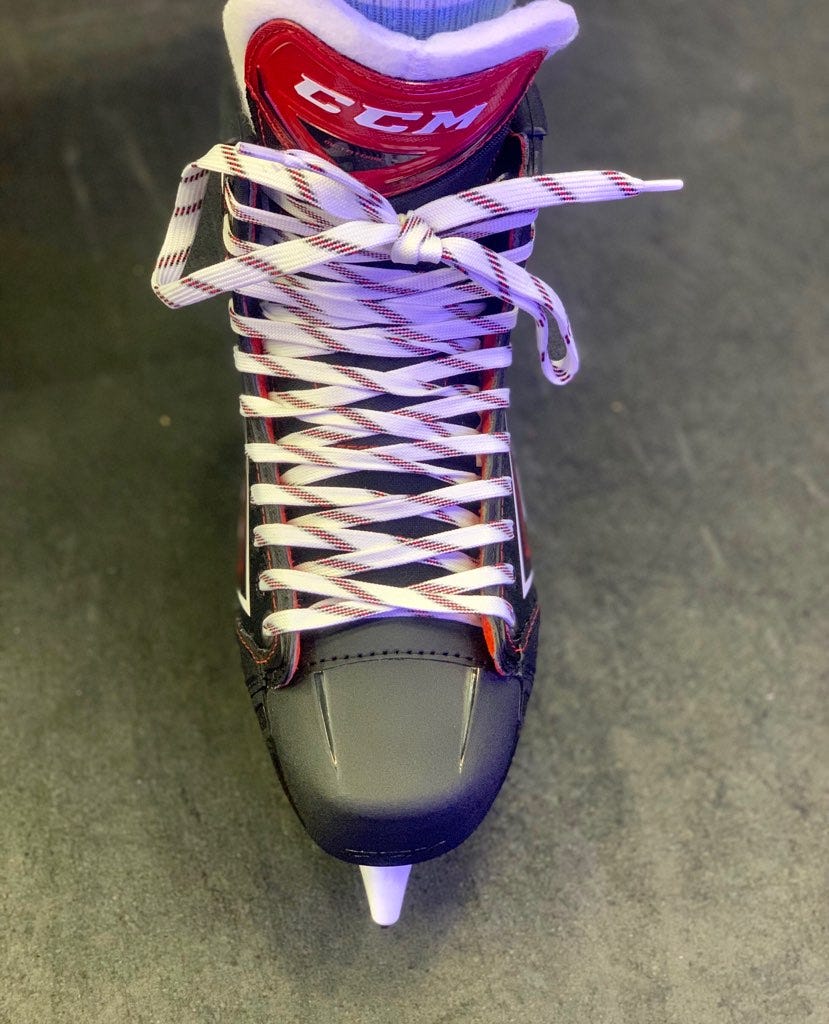
Credit: www.hockeymonkey.com
Basic Lacing Techniques
Learning the basic lacing techniques for ice hockey skates is essential. These methods ensure your skates fit properly and provide the needed support. Proper lacing can also enhance your comfort and performance on the ice.
Criss-cross Method
The Criss-Cross method is the most common technique. It provides a secure fit and evenly distributes pressure across your foot. Start by threading the lace through the bottom eyelets. Pull both ends to make sure they are even.
Next, take one end of the lace and cross it over to the opposite side. Thread it through the next eyelet up. Repeat this process with the other lace end. Continue this pattern up to the top eyelets. Make sure the laces are snug but not too tight.
Once you reach the top, tie a firm knot or a bow. This method keeps your skates tight and secure during play. It also helps prevent any unwanted movement inside the skate.
Loop Lacing
The Loop Lacing technique offers extra ankle support. It’s ideal for players needing more stability. Start by threading the lace through the bottom eyelets. Pull both ends evenly.
Next, cross the laces and thread them through the next eyelets. Instead of continuing the criss-cross pattern, create a loop. To do this, take one lace and loop it through the eyelet above on the same side. Do the same with the other lace.
Pull both laces tight to secure the loops. Continue this pattern up the skate. This method adds extra tension and support around the ankle area.
Once you reach the top, tie a firm knot or a bow. Loop Lacing helps keep your ankles stable and supported throughout the game.
Advanced Lacing Methods
Advanced lacing methods can make a big difference in your skating performance. These techniques provide better fit, support, and comfort. Whether you’re a beginner or an experienced skater, mastering these methods can enhance your game. Let’s dive into some popular advanced lacing methods.
Lock Lacing
Lock lacing helps to keep your skates tight and secure. It prevents your laces from loosening during play. To start, lace your skates normally up to the second last eyelet. Then, take each lace and create a loop by threading it back through the same eyelet. Cross the laces over and tuck them under the opposite loop. Finally, pull tight and tie your laces as usual. This method locks your laces in place.
Lace Bite Prevention
Lace bite can cause a lot of pain and discomfort. Preventing it is crucial for a comfortable skating experience. Start by using waxed laces, which stay tighter longer. Lace your skates normally until you reach the middle of your foot. At this point, skip an eyelet on each side to reduce pressure on the top of your foot. Continue lacing normally to the top. This technique can help distribute pressure more evenly, preventing lace bite.
Adjusting For Comfort
Adjusting your ice hockey skates for comfort is essential. Properly laced skates support your feet and prevent injuries. Let’s explore some tips to ensure your skates fit perfectly.
Tightening Tips
Start by loosening all the laces. Pull the laces tight from the bottom. Make sure each section is snug but not too tight. This creates even pressure across your foot. Tighten the laces more as you move up the skate. The top eyelets should be the tightest. This provides ankle support and stability.
Custom Fit Adjustments
Everyone’s feet are different. Adjust your skates to fit your unique shape. If you feel pressure points, adjust the laces in that area. You can skip an eyelet or cross the laces differently. This helps relieve pressure and improves comfort. Experiment with different lacing patterns. Find what works best for you.
Common Lacing Mistakes
Lacing ice hockey skates correctly is crucial for comfort and performance. Many players make common lacing mistakes that lead to discomfort or injury. This section will address these mistakes and how to avoid them.
Over-tightening
Over-tightening is a frequent mistake. Tight skates can cause pain and restrict blood flow. This discomfort can impact performance and enjoyment.
To avoid over-tightening:
- Start lacing loosely at the toes.
- Gradually tighten towards the ankle.
- Ensure you can wiggle your toes.
Uneven Lacing
Uneven lacing affects skate support. It can lead to blisters and uneven pressure.
To ensure even lacing:
- Pull laces evenly on both sides.
- Check tightness at each eyelet.
- Make sure the skate feels snug, not tight.
Correct lacing ensures better control and comfort on the ice.

Credit: www.youtube.com
Maintaining Your Laces
Laces are a crucial part of your ice hockey skates. They keep your skates tight and secure. Proper maintenance ensures your laces stay strong and effective. Regular inspection and replacing worn laces can make a big difference.
Regular Inspection
Inspect your laces before and after each game or practice. Look for signs of wear and tear. Frayed edges and weak spots are common issues. Run your fingers along the laces to feel for any weak areas.
Pay special attention to the eyelets. Laces can wear out faster around these points. Checking regularly can help catch problems early. This can prevent unexpected breaks during a game.
Replacing Worn Laces
Replace your laces when you notice significant wear. Weak laces can snap at the worst times. It’s better to replace them sooner rather than later.
Follow these steps to replace your laces:
- Remove the old laces from your skates.
- Choose new laces of the correct length. Most adult skates need 96 to 108-inch laces.
- Thread the new laces through the bottom eyelets.
- Cross the laces over and pull through the next eyelets.
- Continue this pattern until you reach the top of the skate.
Make sure to pull the laces tight as you go. This ensures a snug fit. Always have a spare pair of laces in your bag. This can save you in case of an emergency.
Keep your laces clean and dry. Wet laces can weaken and break easier. After each game, remove your laces and let them air dry. This simple step can extend the life of your laces.
| Lace Length | Skate Size |
|---|---|
| 72 inches | Junior (1-3) |
| 84 inches | Intermediate (4-5) |
| 96 inches | Senior (6-8) |
| 108 inches | Senior (9-12) |
Additional Tips For Beginners
Learning how to lace your ice hockey skates can be challenging for beginners. Proper lacing ensures comfort, stability, and better performance on the ice. Here are some additional tips to help you get started and improve your skills.
Practice Makes Perfect
Start by practicing lacing your skates daily. This helps build muscle memory. Use consistent tension when pulling the laces. This ensures even tightness and better support. Over time, your lacing speed and efficiency will improve. Don’t rush. Focus on getting it right each time.
Seeking Expert Advice
Talk to experienced players or coaches. They can offer valuable tips and techniques. Watch online tutorials or videos from professional skaters. Observe their lacing methods and try to emulate them. Visit your local sporting goods store. Staff members often have good knowledge and can assist you.
Credit: www.reddit.com
Frequently Asked Questions
How Do I Properly Lace Ice Hockey Skates?
Properly lacing ice hockey skates ensures stability and comfort. Start at the bottom eyelets, then crisscross up, pulling tightly. Ensure even tension throughout. Finish by tying a secure knot.
Why Is Tight Lacing Important For Hockey Skates?
Tight lacing is crucial for ankle support and preventing blisters. It enhances performance and reduces injury risk. Properly laced skates provide a snug fit, ensuring better control and comfort on the ice.
Should I Lace My Skates Differently For Games?
For games, lacing should be snug but comfortable. Focus on tightness around the ankle for support. Ensure toes can wiggle slightly. This balance offers control and reduces foot fatigue during intense play.
How Often Should I Replace My Skate Laces?
Replace skate laces when they show wear or fraying. Regular inspection is key. Worn laces can break during play, compromising safety. It’s advisable to have spare laces in your gear bag.
Conclusion
Lacing your ice hockey skates properly boosts comfort and performance. Properly tied laces provide better support and reduce injury risk. Start with loose laces at the bottom, tighten as you move up. Make sure the skate feels snug but not too tight.
Practice makes perfect; soon, it becomes second nature. Take your time, and your skating will improve. Enjoy the game and stay safe on the ice. Happy skating!

